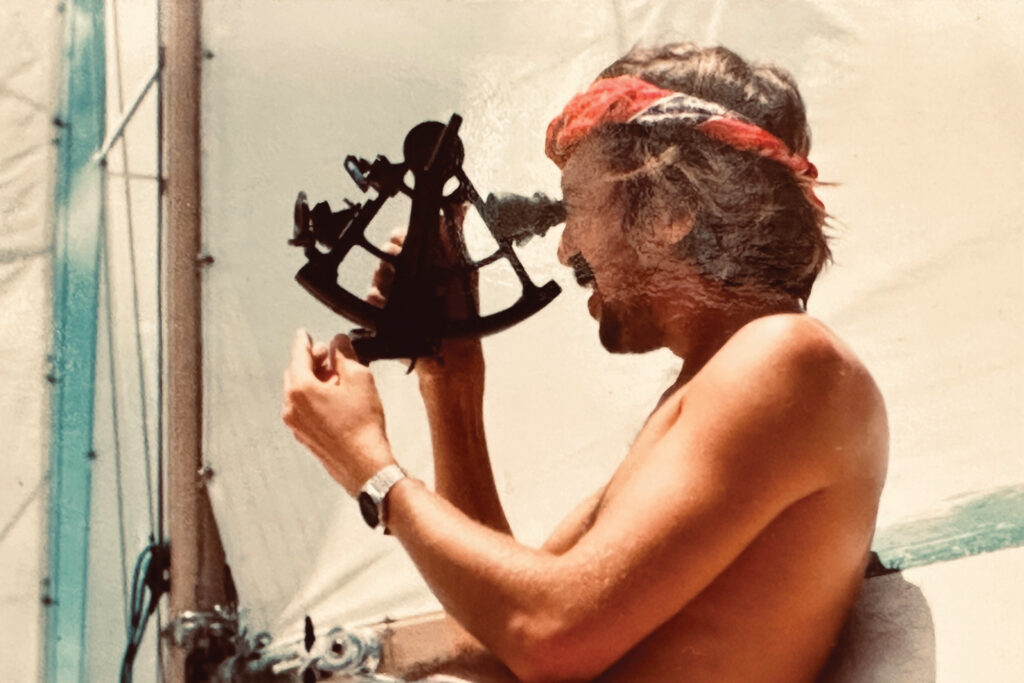
Oh, what joy it would be to buy a boat in late summer, make a list of all the gear it needs in the fall, have the yard work on various projects during the winter, and launch a truly proper, fully functioning yacht in the spring.
This is not a joy I’ve experienced. Each vessel I’ve lived and cruised aboard—even the $100 schooner Elizabeth and the $200 double-ender Corina—busted the piggy bank upon purchase. For us sailors, cruising isn’t a question of which glittery yacht jewelry catches our roving eye. Rather, it’s how to prioritize our few pennies for maximum effect.
Initially, I limit expenditures to strength and safety issues. I make sure the rig won’t fall down, the keel won’t fall off, and the entire contraption won’t disappear beneath the sea. I focus on tasks requiring elbow grease and tenacity, not cash. I invest in things like bilge pumps. I don’t needlessly drill a dozen holes in my hull to install blue underwater LED lights.
Of course, to each his own. Whatever floats your boat—or, in this particular example, sinks it.
I’m not broke because I’m stupid or the world is unfair. I’m correctly and understandably low-income because, while all my contemporaries were hard at work in a corporate straitjacket, I was sailing the seven seas with a bottle of rum in one hand and my wife in the other, while answering my snail mail only every year or so. I’ve never had much economic depth, and it hasn’t much mattered because I measure my wealth in smiles and sea miles.
What is a boat? A container of air. If the water stays outside, then the boat is in a seaworthy condition. Thus, I spend my precious pennies making sure that salt water doesn’t invade, and that once it does, as it always will, I can get it back out before my batteries require a scuba-diving certificate.
Another thing I ask myself is, Does this item make me more free or less free? I personally believe that onboard generators make me less free. Ditto freshwater marine toilets, electric hatches, electric dinghy hoists, electrically extending gangplanks, electrically operated swim platforms, and electric-start dingy outboards.

Don’t they make shipboard life easier? Perhaps. For a week or two. Until they cease to work in the saltwater environment—and cease they will.
Part of the problem is worshiping the false God of convenience. I don’t live aboard because I aspire to sloth. I don’t own a boat because I want to do less. I own a boat because I want to do more, with the entire world as my oyster.
Once, while rowing across Charlotte Amalie harbor off St. Thomas in the US Virgin Islands, I watched an overweight friend leave a yacht with all the conveniences, hop into a center-console RIB with an electric-start outboard, roar ashore to the dinghy dock, slide into the seat of a waiting golf cart, jump from there into his air-conditioned vehicle, and then burn rubber out of the parking lot to drive to a gym—to use its rowing machine.
I mean, really?
When I purchased our 43-foot, 40-year-old midcockpit Wauquiez, I grabbed a notebook and a magnifying glass, and I vigorously scrubbed the entire vessel, inside and out, while taking notes.
Why? Because 99.9 percent of all the problems that a modern vessel has are long foretold if we observe. (This goes for 80 percent of all engine problems too.) Most masts don’t just fall down. They crumple after months of attempting to communicate to their blind owners that they’re about to topple.
Why is one corner of the cockpit spider-cracking, but the other three are not? Why is the portside main bulkhead imprinting through the gelcoat, but the starboard one is not? Why is one of the sheaves of my steering blocks wobbling, yet the others are not?
You don’t have to know what is happening or how to fix it. You just need to identify the problem. You can eventually figure out the solution, perhaps with some help from an experienced sailor.

Please do not hire a bored marine surveyor to do this. The whole idea is to get you in tune with your vessel, its rig and its propulsion system. After all, it is your life on the line offshore. Who cares more about your life? You or a marine expert?
Also beware of “new, modern marine advancements” or gear that sounds too good to be true. I remember how intrigued I was with dripless stuffing boxes until I was in a harbormaster’s office at Red Hook, St. Thomas, and the dock boy rushed in to announce that yet another boat was sinking in its slip.
“Just installed a newfangled stuffing box?” the harbormaster asked.
“We think so,” the kid answered.
“They’re dripless all right,” the harbormaster said as he grabbed his hat. “They gush instead.”
Not everything shiny or pricey is an advance. We sailed twice around the world without refrigeration, a windlass or a watermaker. I’ve never had a self-tailing sheet winch in my life. Hell, I only begrudgingly gave up my sextant in 1996, not because a GPS would give me my position, but rather for the man-overboard function—a clearly valuable offshore safety feature.
Thousands of people laughed when they learned that we hand-copied paper charts across the Pacific during our first circumnavigation. But they weren’t circumnavigating. We were. What do I care what lubbers think?
When I first stepped into Wild Card’s cockpit, I saw an array of wind instruments and six other electrical “conveniences” exposed to the elements. When we sold the boat 23 years and nearly 100,000 miles later, it did not have a single electrical item in the cockpit—not even an electrical switch. (In the Indian Ocean and around the “Cape of Storms,” we jokingly referred to our cockpit as the swimming pool.)
Please don’t get me wrong. I’m not saying that you shouldn’t have a computerized instrument array at your helm that rivals the ones aboard 747 airliners. I’m only suggesting that you consider how dangerous it is to have all your electronics blink out at the same instant, on a pitch-black night, while careening through the breakwater of Durban, South Africa, during a northeasterly gale.
Everything aboard Ganesh is wired independently—with damn good reason. We might be able to lose our depth meter or windspeed meter without consequence, but we never lose everything at once.
We’ve been involved in search-and-rescue operations offshore where all the fancy yachts within 500 miles can’t communicate with their expensive satellite phones, while all the poor folk and local vessels are chatting via no-monthly-fee single-sideband radios.
We simply don’t have, nor do we want, the things that most people desire—not even the modest conveniences our fellow yachties take for granted. Seriously, we don’t sail from Wi-Fi harbor to Wi-Fi harbor for the simple reason that you can’t get away from it all if you bring it all with you.
A buddy of mine just took delivery of a 32-foot, twin-wheel French sailboat. I was eager to see it. Alas, I couldn’t, because he was having air conditioning installed, along with hundreds of pounds of lithium batteries.
His plan? “Daysailing, mostly,” he told me, “with the odd cruising regatta thrown in.”
Perhaps the intake on the air conditioning might help suck him up to windward?
The last time I was in Cocos Keeling, a remote Australian territory in the Indian Ocean, there was a go-faster in the harbor with a bidet aboard but no barometer. To be honest, even if I had more money than Elon Musk, I’m not sure my vessel would be much better off.
Each boat is as different as the sailors who own them. I vowed upon purchasing Ganesh that I’d cut off its fixed Bimini top the first instant I could. Alas, I was too broke to buy hacksaw blades when the time came. Our (now beloved) dodger is still there 50,000 nautical miles later—and 99 percent of our meals are eaten under it.
A modern sailor doesn’t need a depth meter ported into high-tech goggles with music blaring in the background. Common sense is what you need—and a bucketful of cleaning supplies when you first step aboard.








